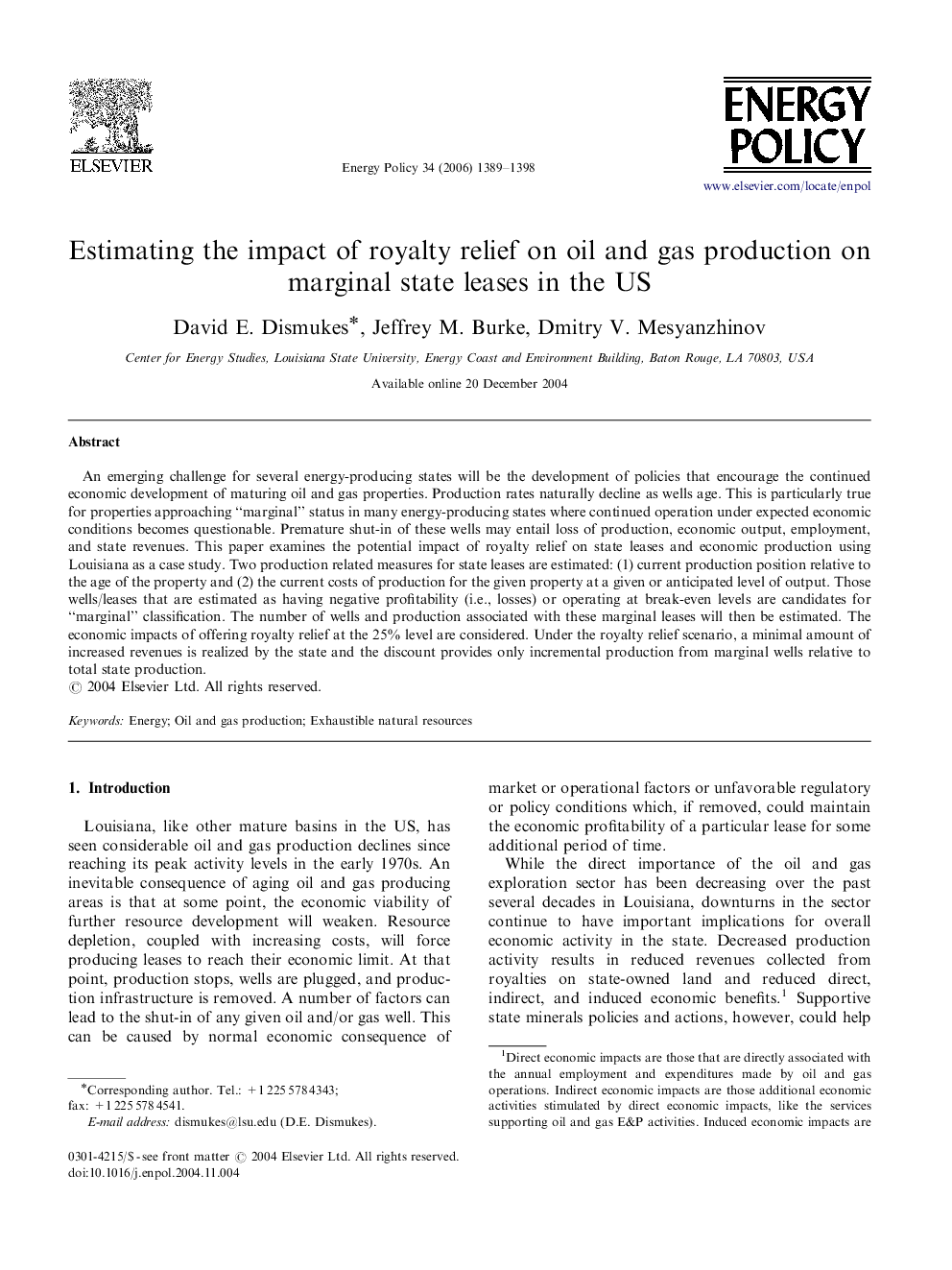| Article ID | Journal | Published Year | Pages | File Type |
|---|---|---|---|---|
| 997268 | Energy Policy | 2006 | 10 Pages |
An emerging challenge for several energy-producing states will be the development of policies that encourage the continued economic development of maturing oil and gas properties. Production rates naturally decline as wells age. This is particularly true for properties approaching “marginal” status in many energy-producing states where continued operation under expected economic conditions becomes questionable. Premature shut-in of these wells may entail loss of production, economic output, employment, and state revenues. This paper examines the potential impact of royalty relief on state leases and economic production using Louisiana as a case study. Two production related measures for state leases are estimated: (1) current production position relative to the age of the property and (2) the current costs of production for the given property at a given or anticipated level of output. Those wells/leases that are estimated as having negative profitability (i.e., losses) or operating at break-even levels are candidates for “marginal” classification. The number of wells and production associated with these marginal leases will then be estimated. The economic impacts of offering royalty relief at the 25% level are considered. Under the royalty relief scenario, a minimal amount of increased revenues is realized by the state and the discount provides only incremental production from marginal wells relative to total state production.
